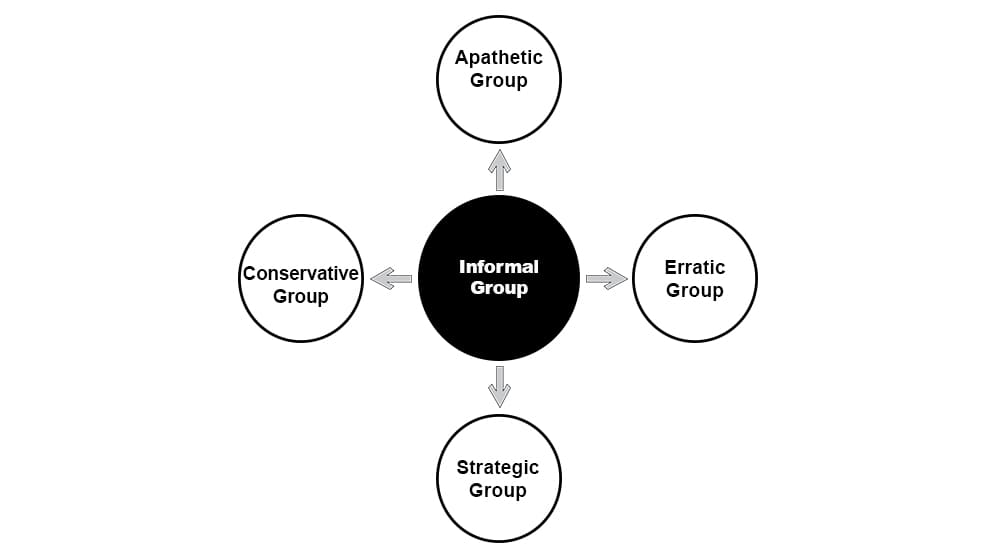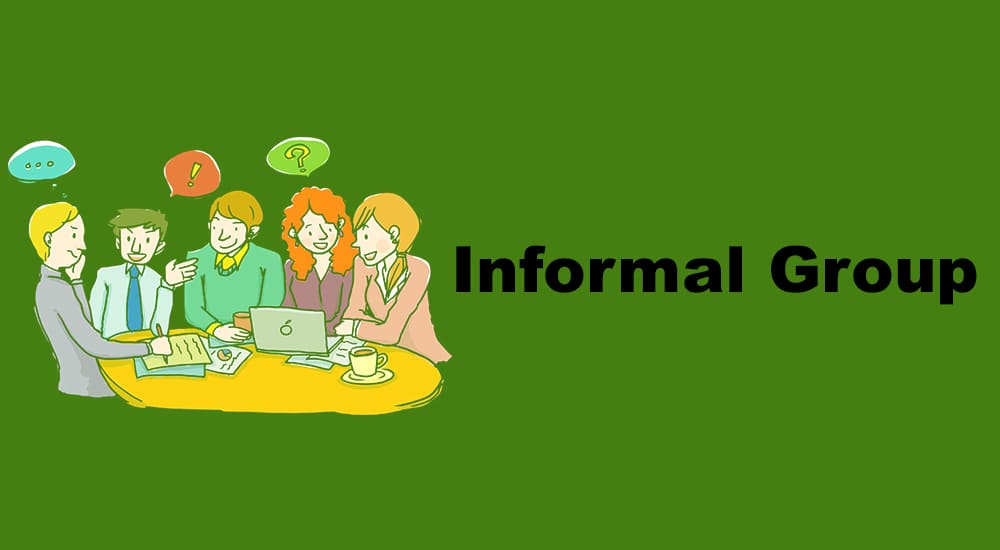Definition: Informal groups are groups formed by individuals when they communicate with one another. These groups are not created by organizations and work democratically.
People form these groups to solve their common issues or social needs; the issues may or may not be related to work.
An informal group exists because of:
- Social need
- Affiliation need
- Physiological need
- To support themselves
- To place pressure on management
- To raise awareness of their demands
According to a study by the Harvard Business Review, informal networks can play a significant role in an organization’s success, particularly in facilitating communication and innovation.
Features of Informal Groups
- Informal groups are spontaneous and exist in all organizations.
- These groups do not require policies and procedures.
- They are created based on common interests and interactions.
- They don’t have any specific hierarchy level.
Types of Informal Group

An informal group can be one of the following types:
- Apathetic Groups
- Erratic Groups
- Strategic Groups
- Conservative Groups
Apathetic Groups: These groups are not very active, have minor grievances, and lack cohesiveness. They also do not have a collective strategy against the organization or government.
Erratic Groups: As the name suggests, these groups are known for erratic behavior, poor control, mismanagement, and no leadership or autocratic leadership.
Strategic Groups: These are well-formed groups with leadership who follow ground rules and can pressure the organization or government to consider their demands.
Conservative Groups: These groups are conservative, have strong unity, and have specific objectives.
Informal groups can also be defined as horizontal, vertical, and mixed groups.
Employees working at the same level in an organization are known as a horizontal group.
Employees working at different levels in an organization belong to a vertical group.
Employees working at different levels and sections in an organization belong to a mixed group.
Benefits of Informal Groups
- Improve work environment
- Provide support for group members
- Help improve work efficiency
- Reduce employee turnover
- Improve communication
Drawbacks of Informal Groups
- Sometimes group cohesiveness does not accept new employees.
- They are often unnecessarily opposed to management decisions.
- Rumors spread faster, affecting the morale of employees.
- They can sometimes cause conflict due to personality clashes.
Summary
An informal group is an association of people who come together for a common interest or interaction. These groups don’t follow any policy or procedures and have no hierarchy. These groups exist everywhere and provide a means of unhindered communication.

Thanks 👆👆